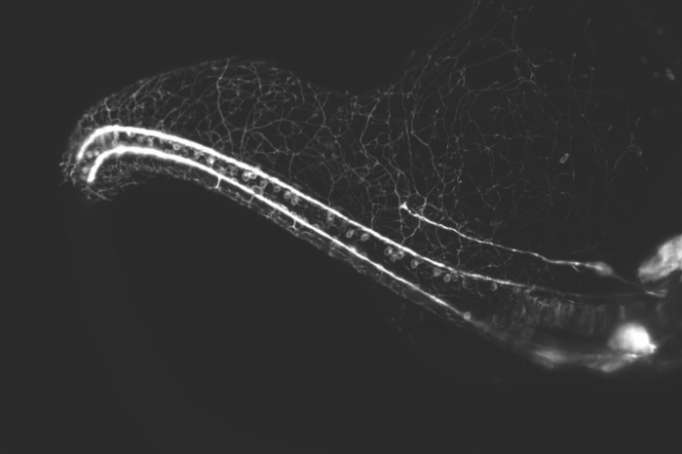The first-place video, created by Dr. Elizabeth Haynes and Jiaye “Henry” He, compresses 16 hours of development down to seconds, using a 10x magnification. The researchers captured the zebrafish embryo in 3D high-temporal resolution. While most zebrafish embryos are immobilized in a gel for similar studies, the researchers were able to capture the embryo in water, which is closer to the fish’s natural development.
“I hope people see this video and understand how much we share with other organisms in terms of our development,” Haynes said. “A neuron is a neuron, and it’s really amazing how most of the time development goes right when so much could go wrong. There is so much art occurring within science and nature, and it’s really special to watch.”
Haynes uses the data to study kinesin light chain genes, while He specializes in microscopic technology. The research into kinesin light chain genes could help scientists better understand axon growth, which could, in turn, fuel additional research into neurodegenerative diseases such as Alzheimer’s.
The second-place prize shows a microscopic colorful pattern — and its’ actually a laser moving through soap. The video, by Dr. Miguel A. Bandres, captures several different physical phenomena, besides just being captivating to watch.
The third-place video captures the intricate movements of a microscopic polychaete worm magnified to 20 and 40 times. While the movements may look like a dance, the researcher says that the polychaete worm is actually digesting, a process that displaces a dorsal blood vessel. The detailed video is raising new questions on the understanding of the microbe.
The competition recognized the top five videos as well as 18 honorable mentions. The complete set of videos can be viewed at the Nikon Small World website.
Read the original article on digitaltrends.com.
















































